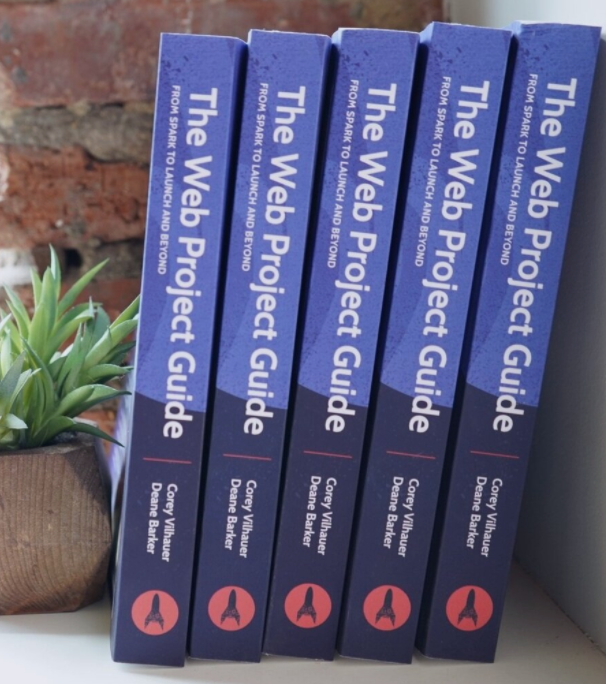by Janus Boye
Building and managing a web project is a big, complex process — one that branches far beyond the phases directly in front of us.
On one hand, there’s the multi-disciplinary nuts and bolts work of creating the site itself. But beyond that, there’s the connective points — the ideas, the strategy, the decision making, and the upkeep. Even if you’re an expert in your field, it can still be a struggle to find context across the entire project landscape.
With The Web Project Guide, Corey Vilhauer and Deane Barker teamed up to write a book which bridges those gaps to help understand how each stage of the website process fits in with the next.
In a recent member conference call, they launched the book to our community. It’s a unique book and below you will find my notes from the call.
What do I need to know to lead a web project?
In the opening of the call, the authors went back in time and shared how the idea for their new book was born. Unfortunately, I never made it to the The Now What? Conference, which was organised by Blend Interactive from 2012 to 2016 in Sioux Falls. This conference featured world-class speakers and was really focused on the ‘Now What’ after a website launch. What do I need to know?
Both authors explained, that hosting these conferences while doing agency work, meant that they were really explaining the same initial project phases over and over again. This then led to a collaborative Google Doc created in 2018 with an initial vision of 30 chapters. As Deane explained it, you could then read one per day, so that end of the month, you know what you need to know.
A few notable industry experts provided input on the initial chapters, including Karen McCrane, who has helped businesses create better digital products through the power of user experience design and content strategy for the past twenty-five years
After extensive editing and drip-feeding chapters on webproject.guide, the two authors finally settled on 24 chapters. Notably, six of them are focused on content, one on selecting the right CMS and two on the actual implementation.
Weaved into the chapters are what you need (inputs and outputs for each), staffing and many important points like how "psychological accommodation" is crucial for a project to succeed.
There’s a unique language to Web
Getting into digital can be an intimidating and hard world to break into. Where most existing books are focused on those who are already doing it, this book aims to enable you to go deeper in your understanding of actually doing web projects.
As it was said during the call paraphrasing the famous Donald Rumsfeld quote:
Take the unknown unknowns and explain to you what it is.
In praising the book, Arild Henrichsen from Epinova in Oslo said:
I like that the book is totally technology agnostic - the concepts are evergreen on their own
The book is written for you if you have not done many web launches before. Whether you are in marketing, communications, or IT, you’ll hopefully the book valuable.
From one of the final chapters of the book
Learn more about the Web Project Guide
You can find more details about the book, browse the chapters and order your own copy on the book website: The Web Project Guide. The book is also on Twitter: @WebProjectGuide.
Credit goes to Sam Otis for the book design, including the inspiring artwork in the book and on the website.
Finally, Deane early on in the call made the point that the project has to make the turn and become a product. He specifically called out the book Website Product Management by David Hobbs as a kind of sequel to The Web Project Guide.
You can also lean back and enjoy the recording from the book launch, where Corey and Deane did a Q&A on the book, the intention behind it and how hard it was to write.


